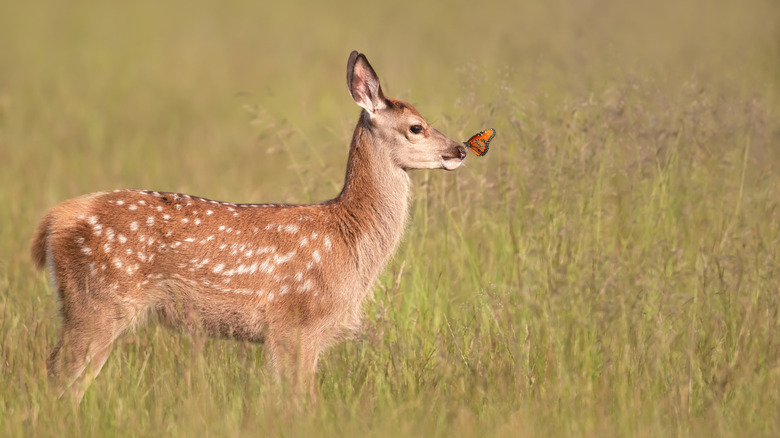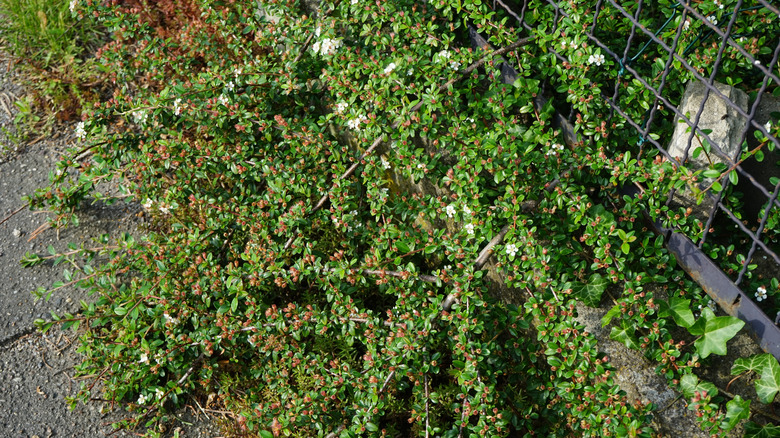The Fast-Growing Ground Cover Shrub That Attracts Pollinators While Being Deer-Resistant
Deer don't have upper incisors, so they browse by tearing leaves off plants rather than biting through them. If you see trampled areas and ragged damage to the foliage in your landscape, deer may be the culprit. Despite trying all the best ways to keep deer out of your yard, you might still find them dining on your favorite plants, especially ground cover plants. The flowers of hardy, easy-to-grow bearberry bushes (Cotoneaster dammeri) attract bees and butterflies, and while songbirds do enjoy the berries the plant produces, deer won't eat it because of its leathery leaf texture and dense growth.
Bearberry's abundant small white flowers bloom in May and then give way to red berries in September that last into winter. Hardy in USDA zones 5 through 8, plants grow up to 1 foot tall and 6 feet wide. Because of its size and density, this won't be the best grass alternative for your lawn, but it can fill in sparse areas, borders, and gardens beds. As this low-growing evergreen spreads, new roots form from trailing branches until a dense mat forms. In the fall, the plant's green leaves take on a purple hue. Bearberry can help control erosion on hillsides, tolerates air pollution, and is fire-resistant. This native of China gets bonus points for its drought resistance, tolerance of poor soil, and infrequent need for pruning.
Adding deer-resistant bearberry to your landscape
Bearberry thrives in both partial and full sun. The bushes are not particular about the soil's pH and will grow in most soil types, including sandy, loamy and clay as long as the area is moist and has good drainage. Bearberry struggles in extreme heat or bitter cold, so plant the bushes in the fall while it's still warm enough for the roots to establish themselves before winter. Work organic material into the plot before planting and water frequently for the first year. Learn how to spot damage from spider mites and lace bugs, as well as fireblight and scale, pests common to bearberry. This variety of Cotoneaster doesn't need regular pruning to thrive, just clip off dead, diseased or damaged foliage as needed.
There are a few things to be wary of when planting bearberry. If you head to the nursery to pick up some bearberry plants for your landscape with the intent of keeping deer at bay, make sure you get Bearberry Cotoneaster, a member of the rose family, and not another plant also named bearberry, Arctostaphylos uva-ursi. From the heath family, this plant is also a hardy ground cover with red fruit, but it doesn't have the same deer-resistant properties. Cotoneaster dammeri, because of its ability to adapt to different growing conditions and its relatively rapid spread, is considered invasive in some regions. The low-lying shrubs crowd out other plants, making it effective for weed control, but keep it away from your desirable native plants. Keep in mind that deer-resistant plants are not necessarily deer-repellent. A repellent is meant to keep animals away, while a deer-resistant plant might still become dinner for a hungry deer if there's nothing else available.

